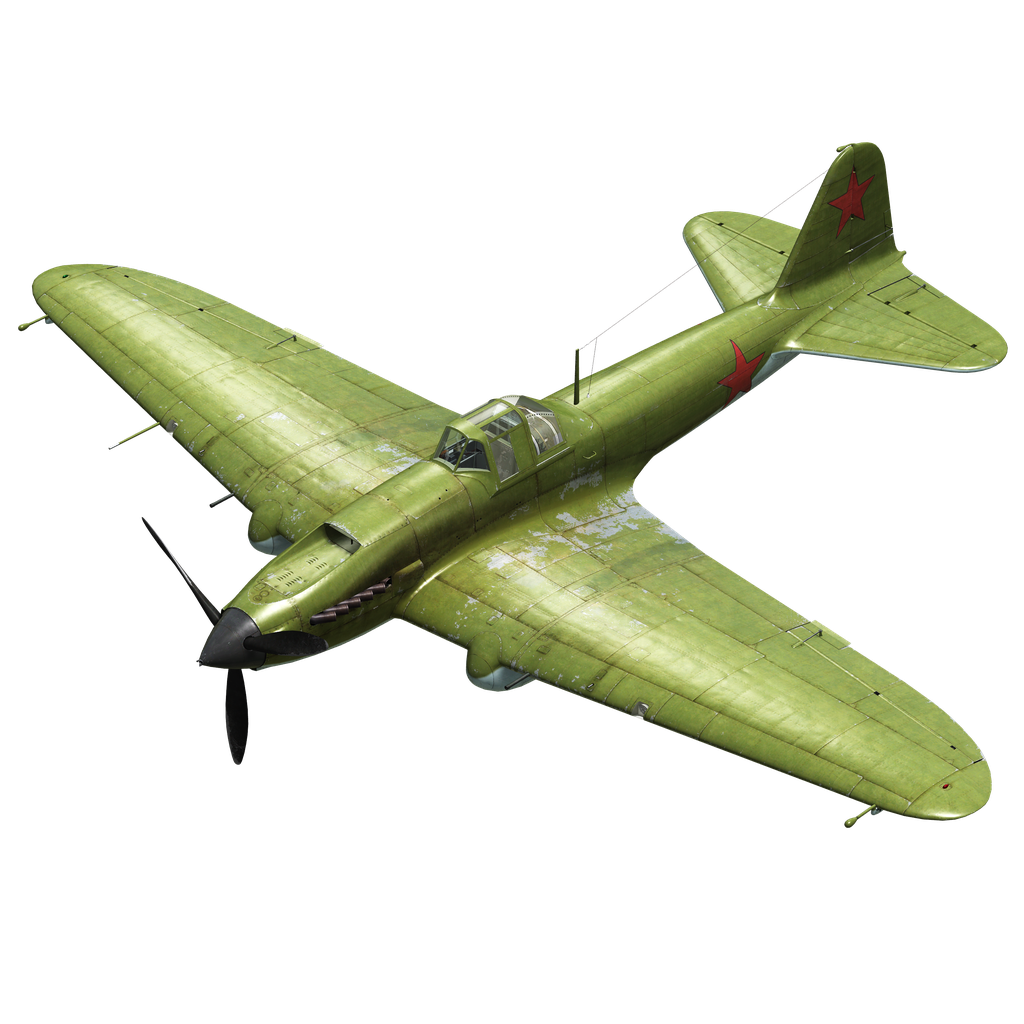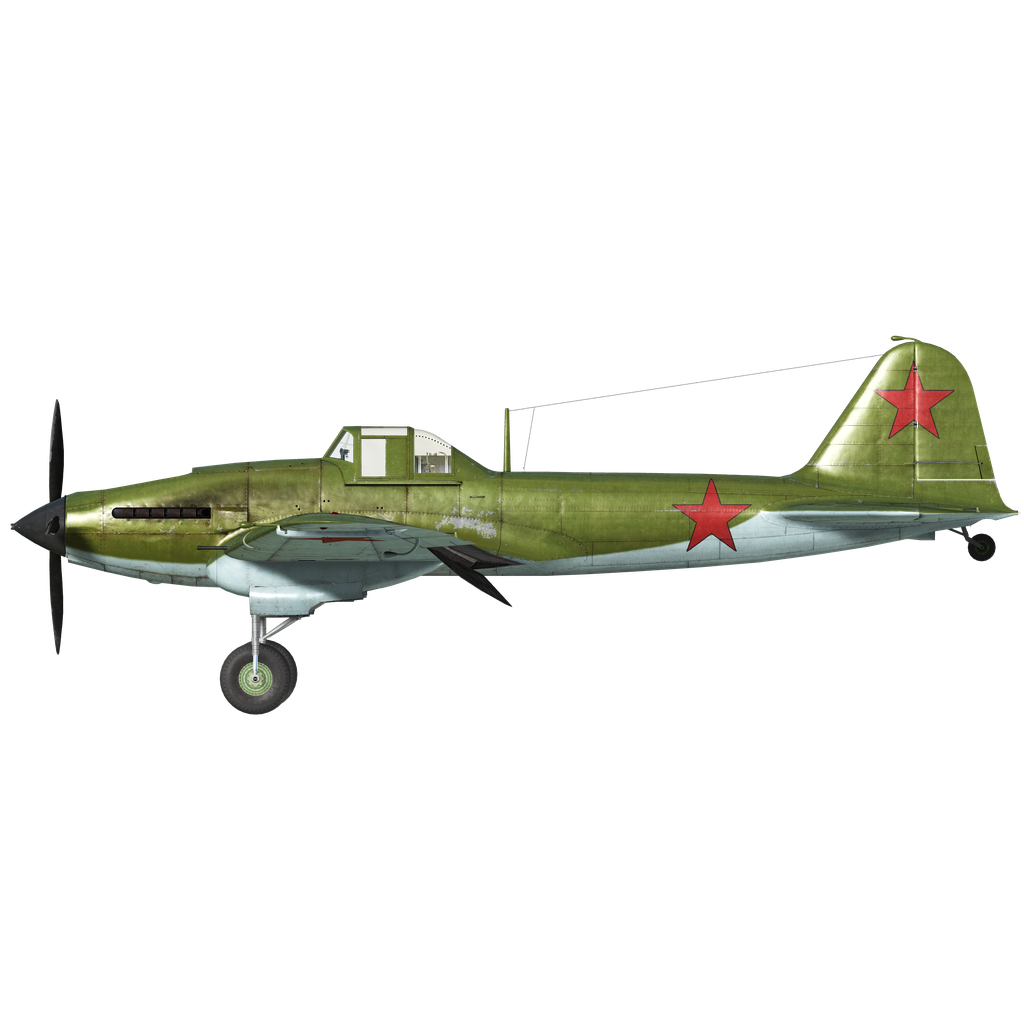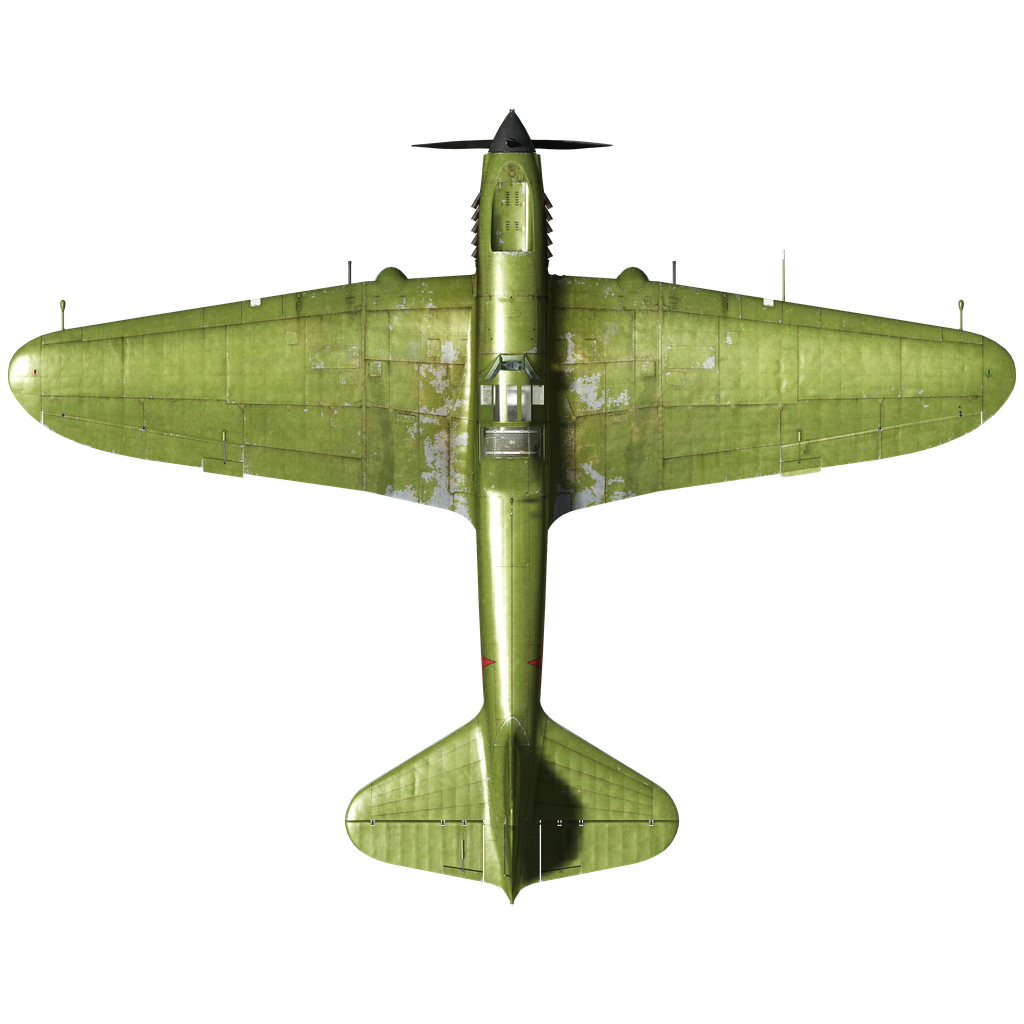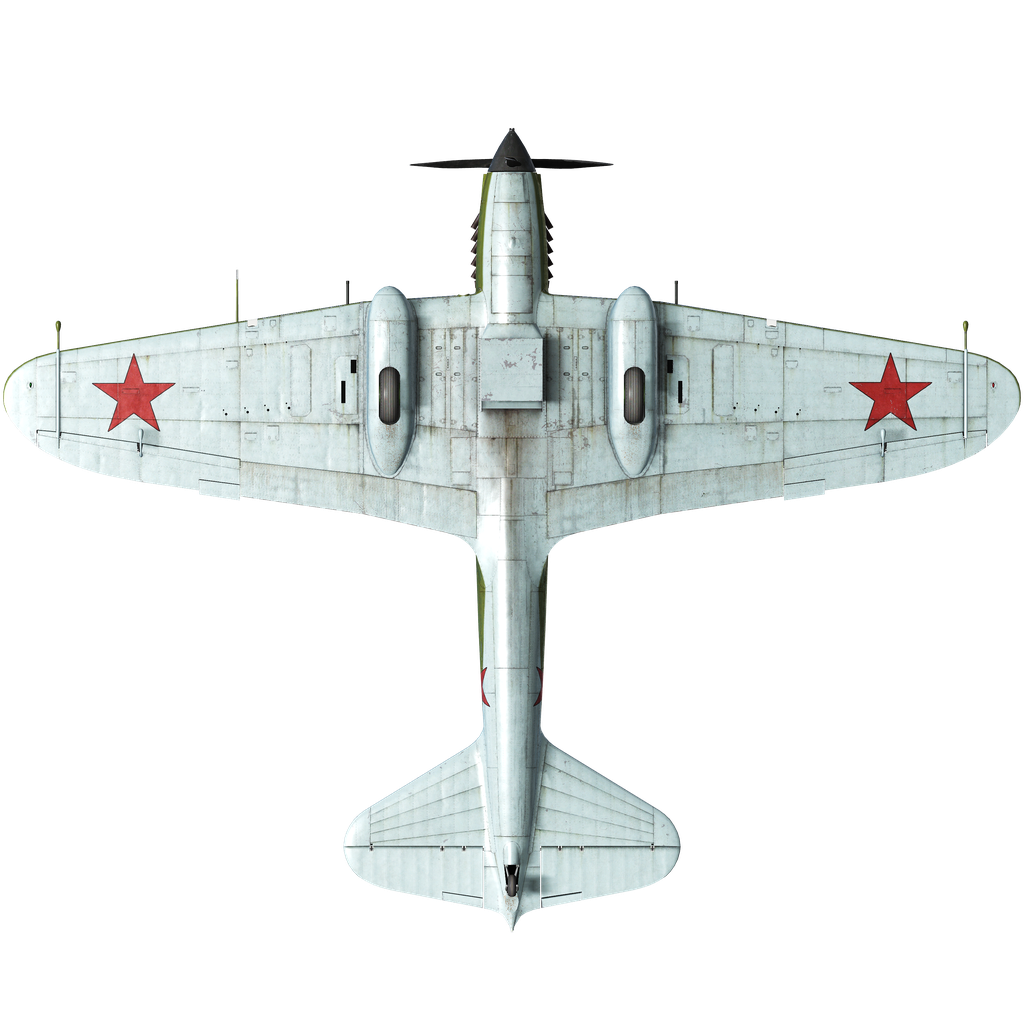Developed by S.V. Ilyushin, the Il-2 attack plane became the main attack aircraft of Soviet aviation during the Great Patriotic War and at the same time the most-produced combat aircraft in the world.
The first flight of the two-seat BSh-2 (TsKB-55) armored attack aircraft took place in 1939, but even after modifications the aircraft did not meet the requirements of the technical specifications: it did not develop the required maximum speed and had an insufficient flight range. Therefore, the engine of the AM-35 high-altitude fighter was replaced by a specially designed AM-38 engine, the aircraft was converted into a single-seat version, the fuselage was lengthened, the canopy was changed, the armor on the rear hemisphere was reinforced, and an additional fuel tank was installed. The new aircraft, with the designation TsKB-57, took off for the first time on October 12, 1940, and went into mass production in March 1941.
The Il-2 circa. 1941 was a single-seat, single-engine, all-metal, low-wing aircraft with retractable landing gear and a tail wheel. The pilot, engine, and fuel tanks were protected by a 4-8 mm armored hull, and the total weight of the armor was 780 kg. The wing and rear fuselage were attached to the armored hull, the strongest element of the airframe. The first series of the Il-2 did not have armor protection over the pilot's head, engine, or rear fuel tank, as it was assumed that enemy fighters would not be able to effectively attack the fighter from above. The tail section of the fuselage and the wings of this series were made entirely of metal, but even at the design stage, it was possible to replace part of the metal structure with wood.
The engine was a water-cooled AM-38 with a variable-pitch propeller. Offensive weapons included 2 machine guns and 2 cannons in the wing. The 20 mm cannons were located closer to the fuselage in the all-metal wings. The 1941 model had no defensive weapons. In addition to small arms and cannons, the aircraft could carry up to 8 unguided rockets and up to 600 kg of bombs.
A total of 8,360 single-seat Il-2s were produced, including up to 6,000 with 23 mm VYa cannons.
In the early days of the war, it became clear that single-seat attack aircraft were suffering disproportionately high losses to enemy fighters. The engineering and technical staff of the regiments, with input from the pilots, began to find ways to protect the aircraft from fighters. Typically, the rear fairing of the cockpit canopy was removed to place a gunner and machine gun with minimal ammunition behind the fuel tank.
It also turned out that the "armored" plane was being hit even by 20 mm anti-aircraft guns — the armor protected only against bullets — but others did not have such protection. It should be noted that the saturation of mobile German units with anti-aircraft artillery was very high.
At the beginning of the war, it was extremely difficult to fight German tanks with the Il-2. The effectiveness of the 20 mm ShVAK cannons against tank armor was low, and it was impossible to drop bombs accurately from the Il-2: the pilot's gun sight proved to be ineffective, since the Il-2 attacked from low altitudes or in a very shallow dive, and the long canopy of the aircraft simply blocked the pilot's target, and during an emergency landing pilots were often injured by hitting their heads on the sight. For these reasons, the PBP-16 sight was removed from most of the Il-2 combat units, and cannon fire was carried out after zeroing with machine guns. Later the so-called Vasiliev BB-1 sight was used. It consisted of a reticle printed on armored glass and a sight on a pin mounted on the engine cowling. For bombing from horizontal flight, special markings were used on the cowl and the armored glass — by combining the markings, the pilot could approximately determine the moment of bomb release.
Despite all the difficulties and design flaws, the single-seat Il-2s attacked enemy motorized and armored columns rushing east, often without fighter cover. This slowed the German onslaught and reduced their offensive capabilities.
1. E. Chernikov “Armored attack aircraft Il-2” M-Hobby 1998
2. V. Perov, O. Rastrenin “Il-2 Sturmovik”, Aviation and Cosmonautics magazine No. 5-6 2001
3. Materials from the site airwar.ru






